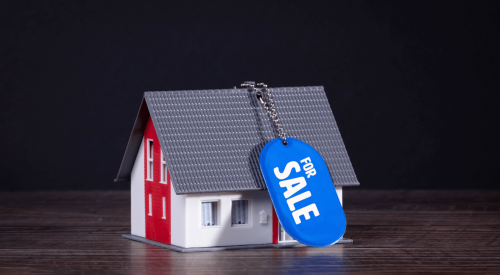Despite all the negative press, hype, and conversation about how bad the housing market is, prospective buyers are still coming out and shopping for new homes. Perhaps not in droves like during the go-go days, but nonetheless, those showing up are indicating an interest. They’re just confused, and it’s the responsibility of new-home sales professionals to help them sort through the clutter of that confusion and get them to think it through.
Nearly every day we encounter people who are seriously interested in owning a brand-new home but delay making the decision and ultimate commitment to purchase. Why? Oftentimes, it’s because of a concept that in many cases is completely invalid — they cannot sell their present home.
Excluding the real-world cases of those who are totally “upside down” due to greatly deflated values and high mortgage balances, I’ll let you in on something I learned first hand during previous housing recessions in the mid-1970s and 1980s — more times than not, the statement “can’t sell” actually means “don’t want to sell.” What’s really happening is prospective buyers are misplacing their priorities. We all know that if a person has a house on the market, in any market, it will almost always sell if it is priced right. The problem comes into play when the sellers think they cannot get what they want for the house based on their perception of the current market, vis-à-vis the “hot market that was.” Therefore, they are not willing to list it at market price so that it sells quickly, falsely thinking that they will lose money.
The important concept that these prospective new-home buyers most often fail to realize is that, no matter the price of their present home, there has never been a better time to buy a new home than now — due to the market forcing builders to adjust their pricing and very favorable financing rates.
Hypothetically, let’s assume that a person owns a home that they acquired several years ago, maybe at the beginning of the boom. They believe that in a good market it should sell for $300,000. However, they determine that because of today’s market conditions it will only sell for $250,000. They feel that they’re losing $50,000 by selling now, and that confusion causes them to wait until the market gets better.
This could be a very costly mistake. The $50,000 they think they’re losing is really phantom profit — it never really existed, it’s only the price appreciation that they thought they might have if the market was better now. What they’re really losing is both the opportunity to own a brand-new home under favorable conditions and the significant financial advantage that could be gained by buying a new home.
Let’s say that today’s market conditions dictate that a homeowner will receive $50,000 less than they think they should, as in the example above. It is almost assured that the value of whatever builders’ homes they’re looking at would be similarly affected. The home they might be looking at in today’s scheme of things for $425,000 would surely cost much more in a good market. The difference would probably be even more than the $50,000 phantom profit. An informed prospect is the best new-home customer.
When a customer is aware of this concept they are more likely to consider buying a brand-new home sooner rather than later. When a customer says, “I can’t sell my home now because if I do, I will lose $50,000,” try this response: “Mr. or Ms. Home Buyer, are you saying that you feel the market is not exceptionally good at this time?” (They will probably say “yes.”)
“Well, if the market was as good as it would have to be in order for you to get $50,000 more for your home, what do you think brand-new homes like these might be selling for?” The logical conclusion is almost always, “Oh, at least $50,000 more than now.”
“Then we’re just talking about an exchange of equity, aren’t we? And, you know that new homes usually tend to appreciate faster in value than used homes.”
The financial advantage and leverage of selling an existing home today and moving up to a brand-new home has never been better. As a new-home sales professional, it is your responsibility to properly convey that important message to your prospective buyers.













